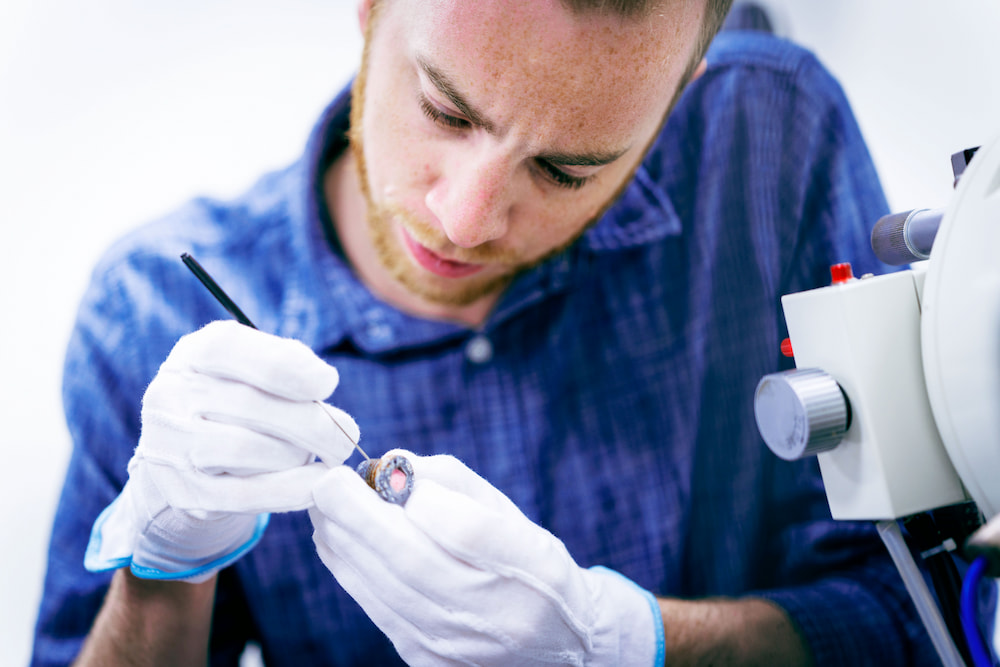Methods & requirements
Volvo STD 423-0018
Corrosion testing determines the resistance of materials to corrosion under specific environmental conditions, like temperature and humidity. Other accelerating factors can be presence of chemicals and the pH-level of the salt fog and pluviometry.
There are mainly two different types of corrosion test standards, field performance and accelerated corrosion tests. Cotec Labs is focused on different types of standardized corrosion tests.
What is important when choosing a test method is to make sure the controlled environment matches the natural outside environment in terms of behaviour of the protective coating when it degrades. Since the methods used in a laboratory environment are accelerated, studies must underpin the extrapolation of test duration.

Moisture resistance in tropical cabinet testing by Volvo STD 423-0018
There are mainly two different types of corrosion testing, field performance and accelerated corrosion tests. Cotec Labs are focused on different types of standardized corrosion tests.
Corrosion testing determines the resistance of materials to corrosion under specific environmental conditions, like temperature and humidity.
What is important when choosing a test method is to make sure the controlled environment matches the natural outside environment in terms of behaviour of the protective coating when it degrades. Since the methods used in a laboratory environment are accelerated, studies must underpin the extrapolation of test duration.
Test procedure
This method refers to the determination of moisture resistance of dry paint films and testing of ageing under moist conditions of adhesives and sealants in tropical cabinets according to an established temperature cycle and in 100 % relative humidity. When applying the standard, it must be clearly stated for how long a period the test piece shall be exposed to moisture, and how the moisture resistance shall be evaluated.
The test piece shall consist of a test panel or a portion of a body part, cab part or similar and shall be painted and hardened in accordance with relevant process requirements. As far as adhesives and sealants are concerned, they shall be applied and hardened in accordance with the relevant process requirements.
Prior to testing, all properties which are to be evaluated as well as any irregularities on the surface of the test piece (fingerprints, drip, etc.) shall be noted. Normally you place the test samples in the chamber when the temperature reaches the lowest point in the specific test cycle. The test cycle can be seen in the picture abow.
The highest value in the temperature cycle shall be 40 ± 1 °C and the lowest 23 ± 5 °C. One temperature cycle is 6 h and the relative humidity shall be 100 % during the entire temperature cycle.
Test assessment
Test objects are tested during a pre-defined exposure time, which can be found described in requirement standards. The test is completed once the specified exposure time for the test samples is reached. When the test is completed, the samples will undergo an evaluation regarding the reequipments set for the specific samples, for examples evaluation of general corrosion or blistering/flaking. Adhesion is an important factor when it comes to the total corrosion resistance and there are multiply test method for measuring adhesion. Adhesion is the force between two surfaces, the bigger the force the better adhesion. Adhesion measurements could be between the substrate and a coating where lacking adhesion could end up with flaking or blisters on the surface. There are two types of adhesions issues, adhesive and cohesive. Adhesive is between two surfaces (for example between the steel and the electro coating). Cohesive is within the coating, for example if the coating itself is torn apart and residues of the coating remain on the substrate underneath.
Evaluations after a Volvo STD 423-0018 tropical test
- Blistering in paints (STD 420-0001)
- Cross-cut test (STD423-0012)
- Scrape (knife) test (STD 423-0009)
- Stone chip resistance (STD 1024,7132)
- High pressure water jet (STD1029,5471)
- Gloss measurement (STD 423-0023)
- Colour deviation compared with unexposed sample (STD 423-0041)
Corrosion resistance requirements
Corrosion resistance requirements for samples tested by Volvo STD 423-0014 are specified by requirement standards. The requirements depend on coating of the samples and the environment the samples are exposed to during position in the vehicle.
Requirement standards where humidity testing by test method Volvo STD 423-0018 is required are for example:
- Volvo STD 121-0001
- Volvo STD 121-0002
- Volvo STD 121-0016
Our most common corrosion tests
Talk to our corrosion test experts
Are you interested in conducting a test? Feel free to contact us – we’re here to assist you every step of the way.

Joakim Ekström

Erik Waltersson
Accredited by SWEDAC
and part of the international accreditation network ILAC

Methods and requirements
We offer a comprehensive and continuously expanding lab-scope of over 300 available test methods and standards.

Laboratory and equipment
Cotec Labs provides a 1200 sqm laboratory facility. Take a closer look at our laboratory
and equipment.

Quality and certificates
We are accredited by Swedac and part of the international accreditation network ILAC.


